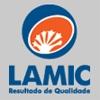Check out what is new in Mycotoxins
Find the best technical articles, forums, and videos on Mycotoxins at Engormix. Enter now and interact with the world's largest agricultural social network.
1. Introduction Oats (Avena sativa L.) have become an increasingly important cereal crop due to their health benefits, particularly in reducing the risk of coronary heart diseases (Thies et al., 2014), and their growing incorporation into human diets (Rasane et al., 2015). For example, corresponding with increased oat consumption trends, oat production in the United Kingdom reached 986 thousand tonnes in 2024, representing a 19 % increase compared to the previous year (DEFRA, 2024)....
Comments : 0
Recommendations: 0

Andrew Vignati from VICAM explains how international regulatory standards are raising the bar for feed safety, particularly in exports. Vignati also shares how VICAM’s solutions empower producers of all sizes with the data they need to make safer, smarter decisions. ...
Comments : 0
Recommendations: 0
1. Introduction Mycotoxins are low molecular weight secondary metabolites produced under appropriate humidity and temperature conditions by filamentous fungi that pose serious risks to animal and human health [1]. With over 300 types of mycotoxins identified to date, mycotoxins can accumulate in various feeds and foods and make agricultural products unfit for consumption [2]. However, many mycotoxins remain poorly understood due to limited knowledge of their toxicokinetics and...
Comments : 0
Recommendations: 2
1. Introduction Aflatoxins (AF) are secondary metabolites mainly produced by mycotoxigenic fungi of the genus Aspergillus [1]. AFB1 is one of the most extensively studied mycotoxins in humans and in a diverse range of animal species. It is widely acknowledged for its hepatotoxic and immunotoxic properties, and it has been classified as a Group I genotoxic carcinogen by the International Agency for Research on Cancer (IARC) [2]. In sub-tropical and tropical countries, AFB1...
Comments : 0
Recommendations: 0
1. Introduction Fusarium head blight (FHB) is one of the most significant wheat diseases and is responsible for causing some of the most severe losses in wheat production [1]. According to existing data released by the FAO [2,3], approximately 25% of harvested grain, including wheat, is contaminated with toxins. The global grain yield in 2018 was 2250 million tons; of this, 800 million tons was wheat, and similar yields have been seen since then, with increasing tendency. Of this...
Comments : 0
Recommendations: 0
Understanding the actual health risk of mycotoxins requires more than simply measuring their presence in grain; it demands a precise characterization of the hazards they pose at realistic exposure levels. A comprehensive review by authors František Malíř, Darina Picková, Jakub Toman, Yann Grosse, and Vladimír Ostrý, published in Mycotoxin Research (DOI: 10.1007/s12550-023-00478-2), updates the current status of hazard characterization for major...
Comments : 0
Recommendations: 0

Dr. Vishwas Sagajkar, DGM Marketing at Venkys India, outlines how shifting weather patterns are driving higher fungal contamination and a surge of multiple mycotoxins in Indian feed ingredients. He highlights the dominance of fumonisin in corn and DDGS, alongside other recurring toxins such as aflatoxin, ochratoxin, citrinin, and T2. ...
Comments : 0
Recommendations: 1

Deepak Khosla from the Venkys Group highlights steady growth in India’s poultry sector alongside rising challenges: mycotoxins, biosecurity gaps, and weakened immune responses. He stresses strict vaccination programs, strong biosecurity after global avian influenza events, and better water and shed management. With climate-driven grain contamination increasing, producers must adopt precise solutions to protect flock performance. ...
Comments : 0
Recommendations: 1

Josep García Sirera, Toxin Solutions Manager at Agrimprove/ Special Nutrients explains how Bio-Bantox Plus combines two bentonites—one natural and one processed—to capture the full range of mycotoxins. The dual polarity approach binds both hydrophilic toxins like aflatoxin and lipophilic toxins such as DON or zearalenone. Its lipophilic component also neutralizes pesticides, chemical residues, and endotoxins, making it a complete toxin-binding...
Comments : 0
Recommendations: 1

Andrew Vignati from VICAM speaks about the benefits of using this technology for mycotoxin detection in the feed ...
Comments : 0
Recommendations: 0
This analysis is based on the book chapter "Relevant fungal species and associated mycotoxins in storage," authored by Carla Cervini, Andrea Patriarca, Carol Verheecke-Vaessen, and Angel Medina, published in Mycotoxins , DOI: 10.1163/9789004724969_011.
While pre-harvest contamination receives significant attention, storage is identified as the most critical stage in the food supply chain where fungal growth and mycotoxin accumulation can severely impact food and feed safety....
Comments : 0
Recommendations: 0

Andrew Vignati from VICAM explains the effectiveness of lateral flow strips for onsite feed testing. “It’s plug-and-play. Fast, simple, and reliable enough to act.” ...
Comments : 0
Recommendations: 1
The study, "Detoxification of emerging mycotoxins in broiler chickens using an innovative liquid anti-mycotoxins solution," authored by Yusuf Barah, Antonio De la Redia, Guilia Perucatti, Raquel Codina, Giulia Marchesini, J. C. Piantanida, and Iñaki de la Roza , published in Veterinaria (Montevideo), 51, supl. 1 DOI: 10.29155/VET.51.supl3 , addresses the persistent challenge of mycotoxin exposure in poultry production.
The research aimed to evaluate the...
Comments : 0
Recommendations: 0
Mycotoxins are known to decrease health and performance in poultry production. Their modes of action, such as reducing protein synthesis and promoting oxidative stress and apoptosis, lead to cell destruction and lower cell replacement, affecting several organs and tissues. When different stress factors collude, such as high temperatures and humidity, poor ventilation, high stocking density, and management events, the effects of in-feed mycotoxins can reach a higher level, which may...
Comments : 2
Recommendations: 0
INTRODUCTION Due to its nutritional value, corn (Zea mays L.) is one of the main ingredients used in the diets for poultry worldwide. Brazil is one of the largest corn producer and exporter countries (USDA, 2021), and, according to ABIMILHO (2023), about 50% of the corn produced in Brazil in the 2019/2020 harvest was used for animal consumption, reaching more than 54% in the 2022/2023 harvest. The grain is globally traded as a commodity because it is a homogeneous product from which...
Comments : 0
Recommendations: 0
Introduction Within livestock production, feed accounts for 65 to 70 % of the total cost of production; however, despite constant efforts to achieve the safety of food intended for animal production, there are still factors that diminish its quality, such as biological pathogens (such as Salmonella spp., E. coli, Listeria spp., Campylobacter spp.), chemical substances (fungicides, herbicides, and insecticides), and presence of fungi (Fusarium, Penicillium, Mucor etc.)(1). Fungal...
Comments : 0
Recommendations: 1
Extreme rains in northwest Iowa have caused instances of stored grain being covered with floodwater. According to current Food and Drug Administration policy, grain inundated by uncontrolled river or stream water is considered adulterated and must be destroyed. The current situation is one of river water flooding rather than of rain-driven pooled water in low ground, for which there are salvage options. River-based floodwaters can bring in many hazards and rapid spoilage. Flooding...
Comments : 0
Recommendations: 0
Background – what are aflatoxins and their impacts Aflatoxins are highly toxic compounds produced by certain strains of Aspergillus fungi, particularly A. flavus and A. parasiticus. These toxins, regulated at very low levels (parts per...
Comments : 0
Recommendations: 0
I. INTRODUCTION Clay minerals and yeast fractions are regarded as effective tools for the prevention of the negative effects of toxic compounds in animal feed and production (Kubena et al., 1990; Lillehoj et al., 2016; M’Sadeq et al., 2015; Phillips et al., 1988). Clays and yeast fractions, when added to animal feeds, can adsorb certain toxic materials in the gastrointestinal tract of the animals, reducing their bioavailability. Dietary supplementation with clays has been shown...
Comments : 0
Recommendations: 1
1. Introduction The term ‘Aflatoxins’ (AFT) typically refers to the sum of variants AFB1, AFB2, AFG1, AFG2, while ‘Fumonisins’ (FBs) refers to the sum of variants FB1 and FB2 [1]. These groups are mycotoxins produced by molds of genera Aspergillus spp. and Fusarium spp., which commonly colonize corn [2–4]. The contamination of corn by AFT or FBs (especially the main variant FB1) has health implications for consumers of corn-derived products. The AFT are...
Comments : 0
Recommendations: 0















.jpg&w=3840&q=75)











